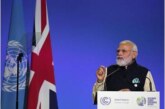
Recent visit of US President Barack Obama to India has undoubtedly proved instrumental in cementing friendly relations between New Delhi and Washington, especially in terms of lifting of sanctions on US export of dual-use technology to India and exploring new avenues in augmenting two-way trade. However, this visit should not be construed in terms of removing main irritants in bilateral relations. The major yardstick of farhoming American warmth towards India is US strategy towards Pakistan. Pakistan occupies special strategic significance in overall American strategy towards South Asia and Middle East.
This approach evolved in the early years of the Cold War continues to dictate Washington’s policy towards South Asia in general and India in particular. There has been consistence in Washington’s policy towards Islamabad followed by liberal economic aid and supplies of modern Americal weapons. Pakistan’s dubious role in nuclear proliferation, especially the notorious role of A.Q Khan, Pakistan’s involvement in terrorist activities against India and the clear evidence of invilvement of Pak trained terorists in perpetrating terror in the US and elsewhere made available by none other than American intelligence community, US continues to prop up Pakistan with liberal assistance.
Selig S. Harrison, writing in Los Angeles Times, dated 8 November 2010 has noted as to how post-2001 U.S. military aid has more than doubled Pakistan’s fleet of nuclear-capable F-16 fighter jets, equipping them with state-of-the-art missiles and laser-guided bombs, and has tripled the number of its anti-submarine helicopters and anti-ship missiles. Before 2001, Pakistan had 200 TOW antitank missiles, crucial in plains warfare with India but of little use in mountain warfare against tribal jihadis. Now it has 5,250.
According to Harrison, the message from Islamabad is that Pakistan’s ‘insecurity’ in the face of Indian power explains why it aids the Taliban in Afghanistan, and that a settlement over the disputed Kashmir region would lead Pakistan to abandon support for Islamist forces. Bob Woodward’s book, Obama’s Wars, shows in detail that the U.S. intelligence community has accepted this argument uncritically and that it has impressed the president.
India’s expectations from Prsident’s Obama’s visit to India were aptly articulated by Paul Beckett in a write up in Wall Street Journal of 4 November 2010 under the title “What India Wants From Obama.” According to Beckett, U.S. President Barack Obama’s priorities, on the eve of his visit to India appeared to be clear: “Make deals that create American jobs and convince India that it is now in the same league of close allies as Britain and Japan thanks to the scaling up of the U.S.-India relationship across issues from counter-terrorism to commerce to the governance of global institutions.”
India’s acceptance of the U.S. as its global partner is closely linked to Washington’s need to satisfy India’s doubts and enthuse the Indian establishment over the prospect of the two nations’ futures being inextricably combined. However, in the aftermath of President Obama’s visit some experts opine that such a thing is not going to happen. India wants specific things – and unfortunately the signs don’t look too good that it’ll get them. One of the main things India wants is enhanced trade ties and the desire to see the civil nuclear pact made fully operational. The U.S. wants that, too, in general.
Specifically, reducing U.S. export controls has been identified by several analysts as a top Indian priority so that India can get technology that would boost defense, agriculture, and biotechnology. But President Obama in an interview with the PTI on the eve of his India visit had described lifting export curbs as complicated and difficult. Though in his interaction with the media in New Delhi on 8 November 2010, the US President made an announcement in this context but it is likely to take some time to ripen into fruition.
Then ‘outsourcing’ is potentially a divisive issue. According to Satish Misra, senior fellow at the Observer Research Foundation in New Delhi, “First and foremost, India would like a clear statement from the U.S. President that the U.S. would not indulge in protectionism. This will ensure a level playing field for all the emerging economies.” In his speeches in New Delhi, President Obama showed more concern for jobs in his own country and was less vocal about outsourcing.
India has been campaigning hard for eliciting support for its induction into the UN Security Council as a Permanent Member, and many countries have endorsed India’s claim except Five Permanent Members. President Obama’s speech before the Indian Parliament on 8 November 2010 has mostly been about his backing for a permanent Indian seat on the U.N. Security Council. In this regard, Nicholas Kristof, while writing in New York Times on 8 November 2010, has observed: “I think that was a throwaway line. It just won’t happen. People have been talking about the need for reform of the Security Council for decades; because it’s ridiculous that membership is based on who won World War II. But just because something is ridiculous doesn’t mean it’s possible to change it. The existing Perm Five mostly resist change that would dilute their influence: why on earth would France want to give up such an important source of global power? And this isn’t something that Obama is going to use his political capital to push for. So it’s a nice applause line in Delhi, but don’t expect more.”
Another of India’s top priorities is an enhanced strategic partnership with the US which includes greater counter-terrorism cooperation particularly in the Pakistani context and also a role in any regional arrangements with regards to Afghanistan. The counter-terrorism cooperation is already underway. However, some experts are apprehensive of what happens once the U.S. winds down in Afghanistan, especially over the notion that the U.S. might bend to Pakistan’s desire to see India shut out of the country despite being a major donor. In the opinion of Suba Chandran, deputy director of the Institute of Peace and Conflict Studies in New Delhi, India wants some ‘space’ internationally to show it is capable of being a global player in helping maintain stability and order. It wants that space in Afghanistan and would ideally like to increase its aid dramatically.
Thus India needs reassurances that the U.S. won’t view India through the prism of either China or Pakistan or, even worse, both. The questions it will ask: Will the U.S. stick up for India in dealing with India’s two most restive neighbors and their aspirations in Central Asia? And will the U.S. stick up for India if it pursues a policy of strategic influence in Southeast Asia, China’s backyard? According to Seema Desai, Asia analyst at Eurasia Group in London, “While the U.S./Obama will make positive noises on this, in reality the situation is more complex and appears to be working against India’s interests at least as of now.”
Pesident Obama’s visit has not yielded much for India and the only positive outcome of this visit can be seen in terms of continuity of highest level visits with some gain in business relations. Present day India and its leadership should shed the past image of wooing so-called Great Powers which are now on decline and rather assert its own presence with the technology and economic clout. Ground realities of international geopolitics demand the presence of a vibrant, strong and resilient India not toeing American or Russian or Chinese line but carving out its own niche.



